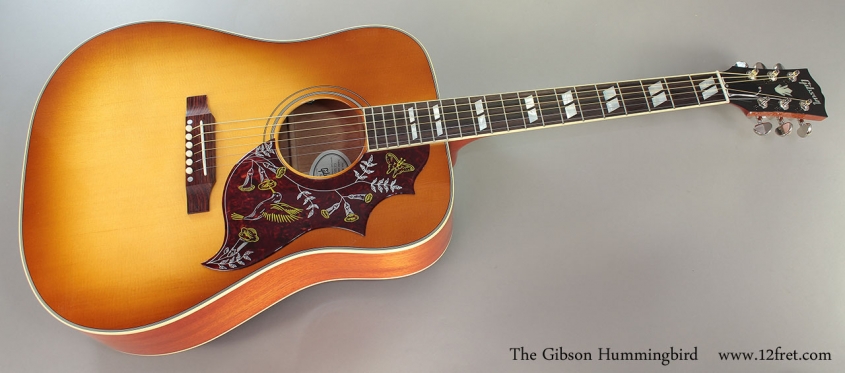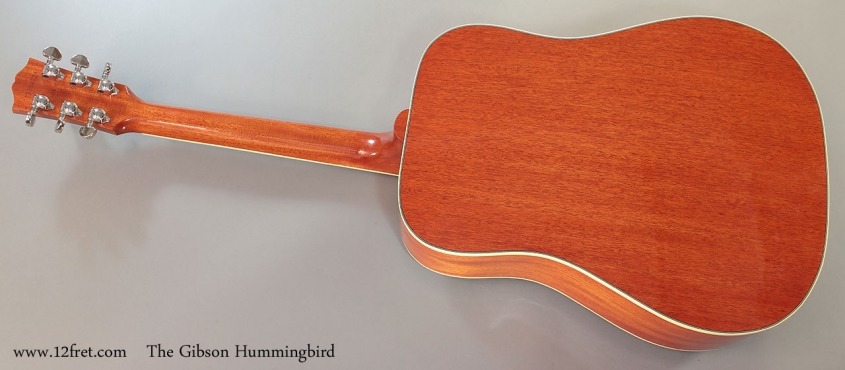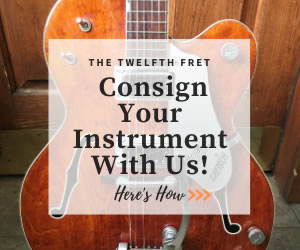One of the true classics, the Gibson Hummingbird is instantly recognizable by its square-shoulder dreadnought design, rich warm tone, and distinctive hand-painted pickguard.
Long a favourite with songwriters, the Gibson Hummingbird appears on many hit tunes, from straight country and folk tunes to full-tilt rockers, including The Rolling Stone’s Street Fighting Man (the tone on the record is a Hummingbird overdriving a cassette recorder!)
Now built at the Gibson Acoustic plant in beautiful Bozeman, Montana, the Hummingbird is everything a Gibson should be – classic and reliable, delivering performance, tone and appearance.
The Hummingbird was introduced in 1960 as Gibson’s first square-shoulder dreadnought – to this point, all the Gibson dreadnoughts had slope shoulders, like the J-45. The fuller body produces lots of low and lower middle frequencies, so the sound is very full and warm but this is not at the expense of high end response. It’s bright without harshness, and full without muddiness. The fairly heavy hand-painted pickguard adds an element of ‘natural compression’ which works very well as a rhythm instrument supporting others, or behind a voice for a singer-songwriter.
The Gibson hummingbird traditionally uses Sitka spruce for the top with hand-scalloped bracing, and solid mahogany for the back, sides and neck with rosewood for the fingerboard and bridge. Mother of pearl is used for the headstock crown and the split-parallelogram position markers. Grover Roto-Matic tuners are used at the head, and am L. R. Baggs Element pickup system is installed. The controls are located just inside the bass side of the soundhole. The nitrocellulose lacquer finish seen here is called ‘Heritage Cherry’ and uses a very nice faded ‘tea’ tone tone to replicate a faded sunburst of an early model. For a limited time, the Gibson Hummingbird is also available in a wine red finish.
There is an innovation on new Hummingbirds – Gibson has updated its production process. Formerly, fingerboards were inlaid, then the frets installed and trimmed to the fingerboard edge, then the binding added, and the finished fingerboard was mounted to the neck blank. You can easily recognize this process because the binding goes over the end of the frets. Now – and this is a change with several positive effects – the frets are installed after the binding is installed; the fret tang is notched back to fit in the fret slot. Because of this, the fret bead surface is wider, so there’s more room for playing, and because the tang is cut back, when winter returns and humidity drops, fingerboard shrinkage won’t trigger cracks in the binding.
The result is a very comfortable and very good sounding guitar, with a large degree of visual appeal.
Visit the Gibson website and read more about the Gibson Hummingbird here!
Serial Number: Varies as New. Show here is 13164021, built during late 2014 at the Gibson plant in Bozeman, Montana.








